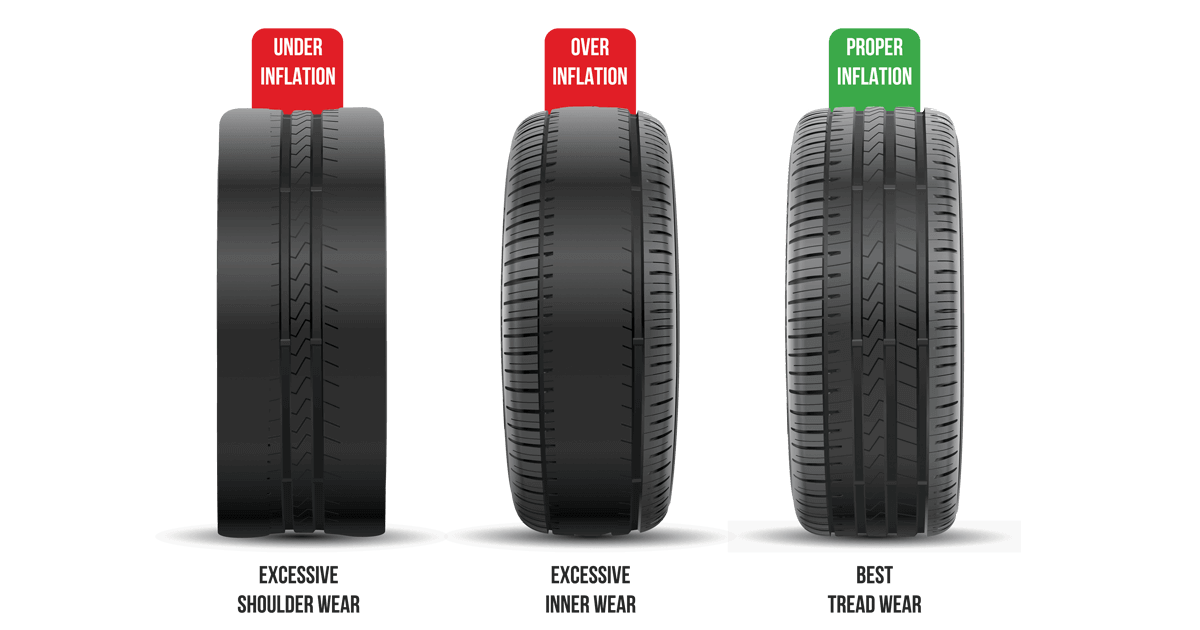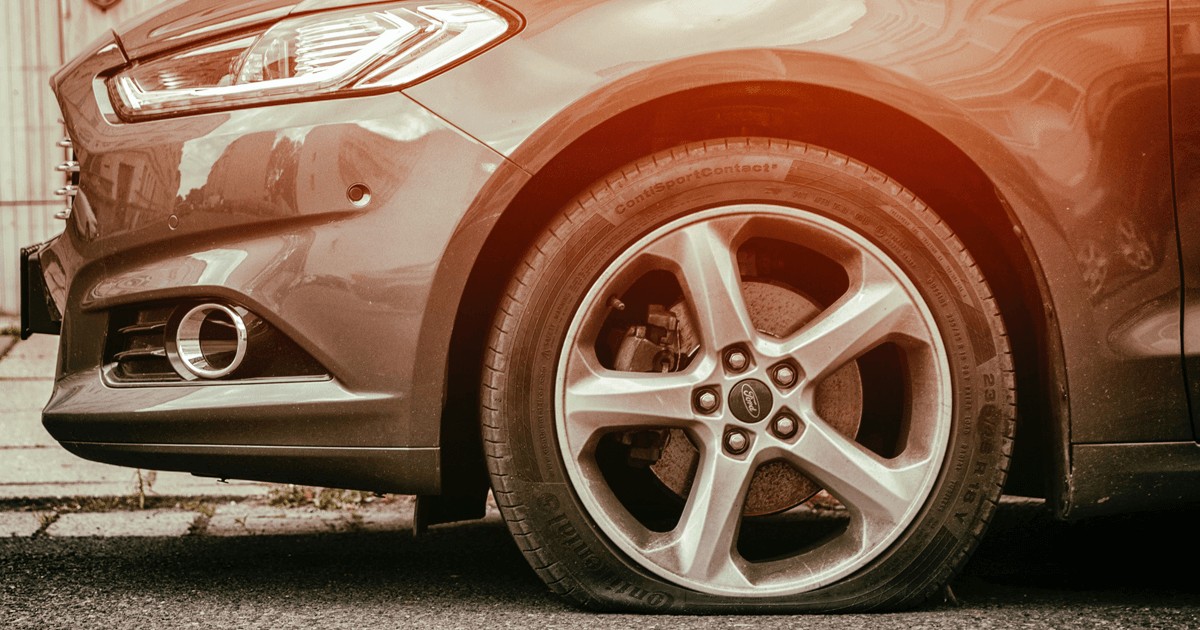
If you ask one thing you should be paying more attention to in your vehicle, we would say pressure for car tyres. Improper pressure for car tyres can lead to poor fuel economy, bad car performance, and compromised safety. You may also feel sluggish steering and your vehicle dipping to the ground.
The sooner you tend to this issue, the better it is for your car’s performance and overall protection. The question is what is the perfect car tyre pressure? How to maintain it? Do weather conditions affect the air level in my car tyres?
I will be answering all these questions and more in this blog post, so read it till the end!
Pressure For Car Tyres – Common Issues
-
OverInflated Tyres:
Overinflated tyres contain more air than the recommended level. It causes the centre of the vehicle’s tyre tread to wear out.
-
UnderInflated Tyres:
Underinflated tyres have lower than the suggested air pressure for car tyres. Underinflation causes damage to the tread on the outside of the vehicle tyre.
Why Is Pressure For Car Tyres Important?

As I’ve mentioned previously, the level of air pressure in car tyres can affect your drive tremendously.
-
Tyre Grip:
The grip your tyre has on the road depends on the contact area between the road and the tyre. Overinflated tyres decrease the grip the car has by reducing the contact patch between the tyre and the road. It makes this harder to control the vehicle. Underinflation, on the other hand, increases the area of contact between the ground and the tyre, therefore increasing road grip. While race car drivers may want a better grip on purpose, that is not something your drive needs daily. Improved grip might also lead to Aquaplaning. This hazardous event involves a layer of water forming between the tyre and the road, and it can lead to a loss of traction. Consequently, it can cause the vehicle to become unresponsive to control inputs.
-
Tyre Wear:
Vehicle tyres have tread patterns on them that help the car grip the ground under it. Without these, you would not be able to control your car efficiently. Worn out tyres lose this pattern, so require urgent replacement. Underinflated tyres cause wear to the outside treads of your vehicle tyre while overinflation triggers wear to the tread at the centre of the vehicle tyre.
-
Fuel Economy:
If you’re driving a car with underinflated tyres, it will need more fuel to fight the friction caused by the higher contact area. Therefore, to have a better fuel economy, I advise you to run your vehicle at the recommended level of air pressure for car tyres.
What Is The Recommended Pressure?
Recommended inflation levels depend on certain factors and they are specific to your car and wheel type. The make and model of your car, as well as the driving conditions, determine what the right pressure for car tyres should be in that instance. For example, a regular hatchback carrying two people will need less air in its tyres than a loaded truck. Other factors that can affect this are the terrain you are driving in and the weather. It is better to have slightly underinflated vehicle tyres while driving on harsh road surfaces to avoid damaging your tyres.
To find out what the right tyre pressure for your car is, look for a placard containing this information or check your owner’s manual. You can find it on the inside of your driver's side door jam, in your glove box, or inside your fuel compartment door. You may also be able to find pressure for car tyres under the bonnet or the tyre sidewall.
Always remember that the stated upper value is the maximum limit that tyres can bear, so you should always keep the air pressure slightly below this. The placard should also give separate recommended air levels for cold and warm weather.
Checking And Fixing The Pressure For Car Tyres:
To check the air pressure in your tyre, you will need the following:
- Tire pressure gauge
- Air compressor
Follow the steps below to check and manage the pressure in your vehicle’s tyres:
-
Make sure your tyres are cold:
To ensure this, you should check the pressure for car tyres in the morning or right before you go for a drive. Having driven some distance will cause your car tyres to heat up, which will show the air pressure level to be much higher than it actually is.
-
Insert the pressure gauge:
Your car wheel will have a valve stem protruding from it. Unscrew the cap on this and push the pressure gauge in. If you hear a hissing sound, it is because you could not attach the gauge properly. Push the gauge harder until the hissing stops. Check the reading on the gauge.
-
Record the readings:
Repeat this process for all the tyres and jot down the readings you get for each one. Compare these to the recommended pressure for car tyres that you found earlier and make a note of all discrepancies. Some vehicles have distinct pressure levels for front and back tyres as well as for different weather conditions. Therefore, consider all these factors before moving onto the next step.
-
Fill your tyres:
Use your air compressor to fill your tyres up. To do this, you will have to plug the compressor into your car’s 12V socket. Subsequently, securely attach the hose of the compressor to the valve stem and inflate the tyre to the right pressure. If the weather is hot, inflate the tyres an extra 3 to 4 psi (pound per square inch) since it will drop when the tyres cool down. In case you end up overinflating, use the gauge to let out some of the extra pressure.
While you can get this whole process done at a gas station, I recommend you do it at home or at a workshop where you can let your car tyres cool down sufficiently.
Final Words:
Optimum tyre pressure is crucial to the efficient performance of your car. Recommended inflated levels can increase the longevity of tyres and lower your vehicles’ running costs. Wrong tyre pressure can cause low fuel mileage as well as hydroplaning, which can be catastrophic. Therefore, make sure to check and keep the air pressure above or close to the approved level of pressure for car tyres.



